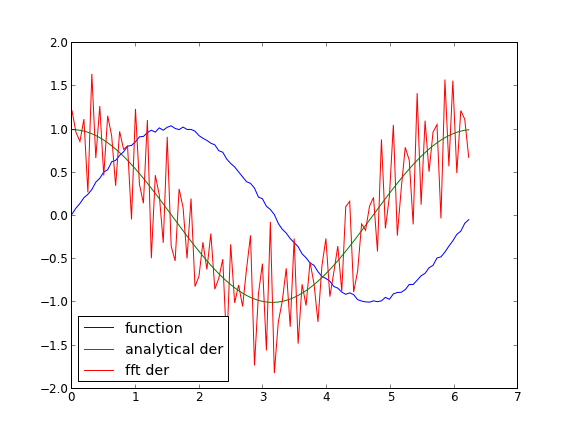Derivatives by FFT
Posted February 26, 2013 at 09:00 AM | categories: differentiation | tags:
Updated February 27, 2013 at 02:51 PM
import numpy as np import matplotlib.pyplot as plt N = 101 #number of points L = 2 * np.pi #interval of data x = np.arange(0.0, L, L/float(N)) #this does not include the endpoint #add some random noise y = np.sin(x) + 0.05 * np.random.random(size=x.shape) dy_analytical = np.cos(x) ''' http://sci.tech-archive.net/Archive/sci.math/2008-05/msg00401.html you can use fft to calculate derivatives! ''' if N % 2 == 0: k = np.asarray(range(0, N / 2) + [0] + range(-N / 2 + 1,0)) else: k = np.asarray(range(0,(N - 1) / 2) + [0] + range(-(N - 1) / 2, 0)) k *= 2 * np.pi / L fd = np.real(np.fft.ifft(1.0j * k * np.fft.fft(y))) plt.plot(x, y, label='function') plt.plot(x,dy_analytical,label='analytical der') plt.plot(x,fd,label='fft der') plt.legend(loc='lower left') plt.savefig('images/fft-der.png') plt.show()

Copyright (C) 2013 by John Kitchin. See the License for information about copying.